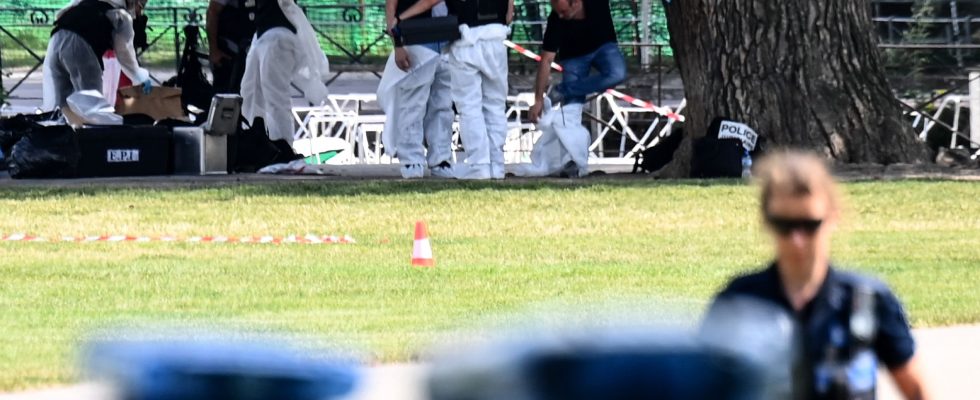The Annecy knife attack shocked the country. The toll is heavy: six injured, including four children, some seriously. Fortunately, no deaths. However, the emotion remains very strong. First, because of the enigmatic migratory route of the assailant, a Syrian holding the right of asylum in Sweden, who entered France legally in order to carry out the same procedure. Then, the monstrosity of the gesture – the youngest victim was less than two years old – captured on video by an unknown person. But the incredible scale taken by this event on social networks (and in particular via this filmed sequence) also has something to do with it.
According to exclusive figures collected by L’Express from the analysis company Bloom, some 270,000 French-language posts related to the attack have accumulated 35 million views and more than 3 million engagements on Twitter, Facebook, Instagram, YouTube and TikTok. All this in just four days, from June 8 to 11. “Enormous” repercussions, comments Matthieu Ponzio, an analyst at the firm. The online actions of the extreme right are no strangers to this. Damien Rieu, Reconquest activist, is thus the first major account to relay to its 198,000 Twitter subscribers a partial version of the video at 11:31 a.m., less than two hours after the events. It has 522,000 views to date. The mobilization of elected officials, parties and other activists ranging from the National Rally of Marine Le Pen to Florian Philippot, then followed quickly. The leader of the “Patriots” is the personality most relayed around the attack on YouTube. The keyword “immigration” is installed simultaneously among the far right and among the general public, notes Bloom again.
On arrival, this large political family is alone responsible for 11% of the content generated during the 96 hours following the attack. A lower total, logically, than that of the media (31%) and the general public (56%, and which may include sympathizers), but comparatively much higher than that of the other political fringes, such as those represented in government in particular ( only 1% of content) and the far left (also 1%). The extreme right has also distinguished itself for its very biased publications. “Strong interactions take place within the far-right cluster, which opposes the image of the Syrian ‘criminal’ to that of the heroic pilgrim Henri”, distinguishes one at Bloom. According to our information, “the man with the backpack” could soon be decorated with the Legion of Honor.
From TikTok to Telegram
The noise generated by the Annecy attack has also spread to TikTok. The existence of video plans combined with the power of the Chinese social network mean that, despite only 4% of content related to the attack published on the application, TikTok generates 42% of overall engagements. Or as much as Twitter. Dizzy. Note that after the deletion or banishment of the complete video of the knife attack, the latter makes its way to Telegram. The network of Russian origin imposes itself, as for the subjects around the war in Ukraine, as the refuge of the ultra-right conspiracy.
Engagement is lower, but content is even more polarized. “Several theories are circulating there: one according to which the Syrian is not a Christian as he claims but a Muslim. Or another supposing that the man named Henri is close to Macron”, notes Bloom. Sign of the strong interest of extremists for the event, “this one was a new opportunity for ultra-right communities to use techniques of spreading inauthentic content (“massive commentators” and “spintax” – very slight variations syntax of the same comments, Editor’s note). This content targets government policy on immigration”, concludes the analysis company. This time across all platforms. Beware of the distorting mirror sometimes held up by social networks. The Annecy attack is once again an example of this.
